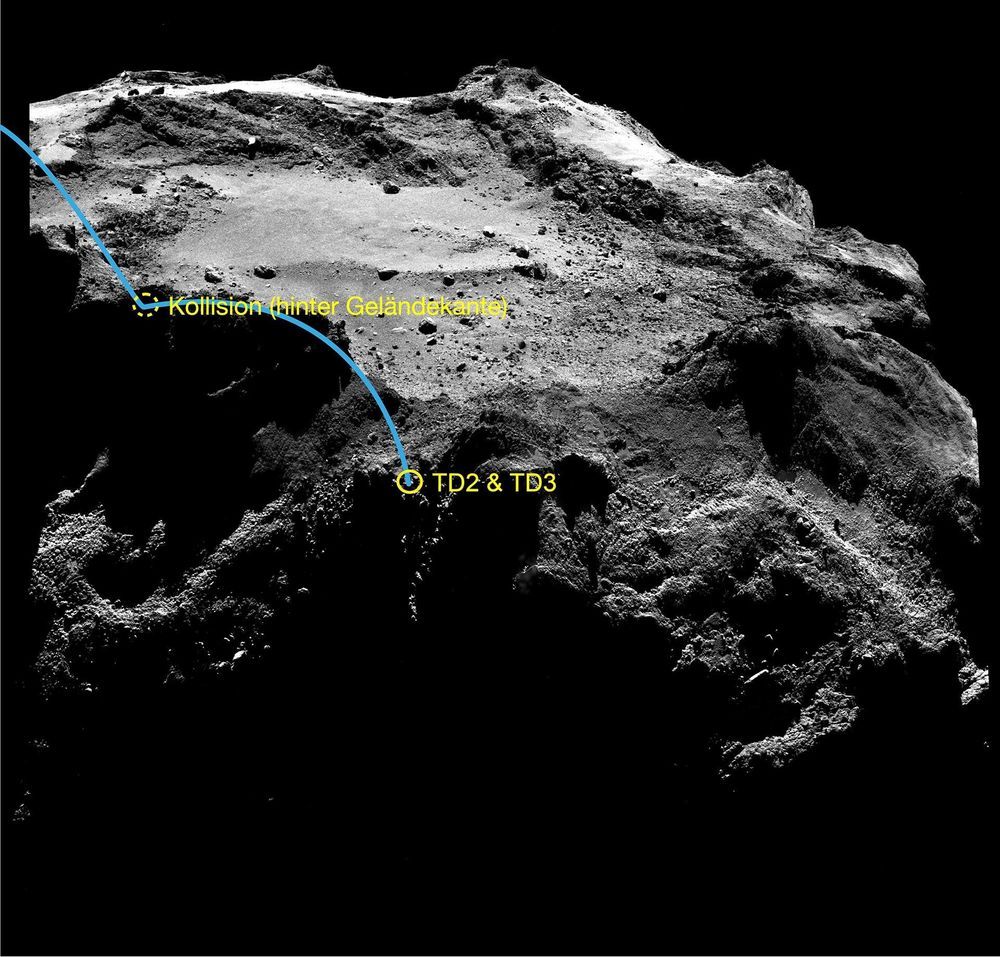After years of detective work, scientists working on the European Space Agency (ESA) Rosetta mission have now been able to locate where the Philae lander made its second and penultimate contact with the surface of Comet 67P/Churyumov-Gerasimenko on 12 November 2014, before finally coming to a halt 30 metres away. This landing was monitored from the German Aerospace Center Philae Control Center. Philae left traces behind; the lander pressed its top side and the housing of its sample drill into an icy crevice in a black rocky area covered with carbonaceous dust. As a result, Philae scratched open the surface, exposing ice from when the comet was formed that had been protected from the Sun’s radiation ever since. The bare, bright icy surface, the outline of which is somewhat reminiscent of a skull, has now revealed the contact point, researchers write in the scientific publication Nature.
All that was known previously was the location of the first contact, that there had been another impact following the rebound, and the location of the final landing site where Philae came to rest after two hours and where it was found towards the end of the Rosetta mission in 2016. “Now we finally know the exact place where Philae touched down on the comet for the second time. This will allow us to fully reconstruct the lander’s trajectory and derive important scientific results from the telemetry data as well as measurements from some of the instruments operating during the landing process,” explains Jean-Baptiste Vincent from the DLR Institute of Planetary Research, who was involved in the research published today. “Philae had left us with one final mystery waiting to be solved,” says ESA’s Laurence O’Rourke, the lead author of the study.
